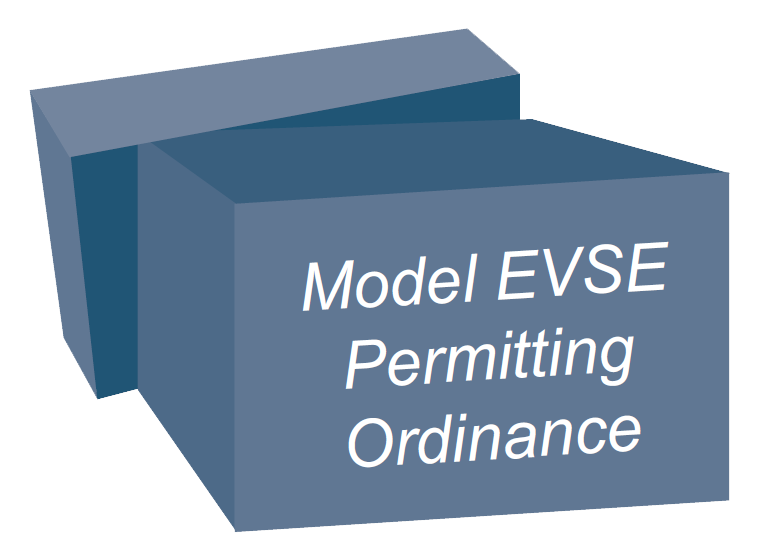Design
Consider Whether this Policy In a Box is Right for your State
Are concerns about permitting EVSE infrastructure frequently raised as an obstacle to achieving your state’s goals? Is the process seen as confusing, time-consuming and burdensome? Have local jurisdictions raised questions to the State Energy Office — or with each other — seeking guidance on permitting EV infrastructure, especially in public spaces?
We recommend a quick poll of organizations that are likely Stakeholder Process members, to gauge interest and gather information on issues and concerns. In the Massachusetts example, representatives from the Clean Cities Coalition, Metropolitan Area Planning Council, Department of Energy Resources, and other planning agencies and regional councils were among those who attended calls.
Identify a Model Ordinance Institutional Host
Without a legislative mandate, a State Energy Office may not have authority to create a model ordinance. In the example, the Massachusetts Department of Energy Resources supported the NGO-led process, signed on to the final product, and references the model ordinance as a resource.
This Policy In a Box suggests partnering with an advocacy NGO, trade organization, academic institution, or other suitable organizations as the host for the model ordinance. E4TheFuture, with its stakeholder convening mission serves as the host in the Massachusetts case.
Each state has a unique set of entities that can be considered as potential hosts for the model ordinance. In the specific case of Massachusetts, E4TheFuture presented the idea to the Massachusetts Department of Energy Resources and assumed the host role. Other organizations that could fulfill this role include the State Municipal League in collaboration with the National League of Cities, planning agencies, the State Associates of the National Association of Regional Councils (NARC), or the Clean Cities Coalition.
Consider Scope & Resources
The scope of the project will determine the scale and types of resources needed.
A limited scope could entail developing a model rule to be posted online for public access.
The Massachusetts model ordinance process included developing a slide deck for use by proponents who plan to meet with jurisdictions to pursue adopting an expedited permitting EVSE ordinance, and a helpful web page .
A more comprehensive scope could include an outreach program and follow-up. Webinars and meetings can inform local jurisdictions and other stakeholders about the model ordinance, and/or provide technical assistance to jurisdictions that implement the model ordinance and plan to track cases of model ordinance adoptions. Subsequent follow-up may also include reconvening the Stakeholder Process to update the model permitting ordinance.
Clearly define time commitments for stakeholders and plan accordingly. Stakeholders will generally be asked to contribute time, so it is important to define the number of meetings and outline how much time to set aside for review of materials. Committee members should likely plan for one hour of preparation for each hour of meeting time. Stakeholder organizations could include EVSE vendors, property owners, citizen groups, local and regional officials and advocates. See an example list of committee members .
The logistics and content development activities needed for a productive convening process will be the major resource requirement for Stakeholder Process moderators and staff. The State Energy Office could choose to support these activities with in-house resources or by providing resources — either by grant or contract — to an organization that serves the role of model ordinance host.
Plan Stakeholder Process Scope of Work & Timeline
Based on the design decisions made above, the final design step is to prepare a scope of work, determine when the process should start and how long it should take.
The State Energy Office then can either assign its own staff to prepare for and convene the Stakeholder Process or identify funding and initiate a procurement process to fulfill the scope.
In the Massachusetts example, E4TheFuture contributed staff resources for the process, comprising one month of preparation followed by six meetings over two months, and one month to finalize and post the documents. Two E4TheFuture program staff, with communications support, worked for an estimated total of one FTE over four months. The E4TheFuture team used email for all communications during the convening process, and developed this web page as part of the adoption phase.
Prepare a Goal Statement and Name the Project
Write a mission or goal statement to create internal consensus and facilitate communications among participants. For example, the Massachusetts stakeholders used the goal statement:
“The Electric Vehicle Charging Station Expedited Permitting Ordinance will allow Massachusetts municipalities to adopt a framework to provide charging station permitting that is safe, fair and timely.”
A formal stakeholder process needs a name to use when sending invitations, and to set up sharing of materials. The name for the Massachusetts example:
EVSE Expedited Permitting Task Force
This name communicates the goal of addressing inefficiencies resulting from fitting EVSE technologies into existing permitting frameworks.

